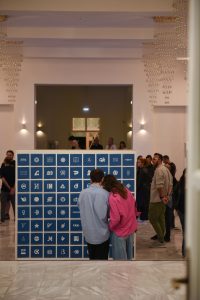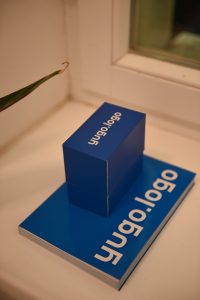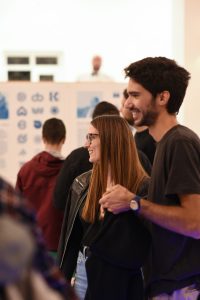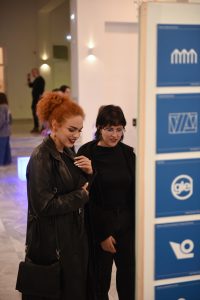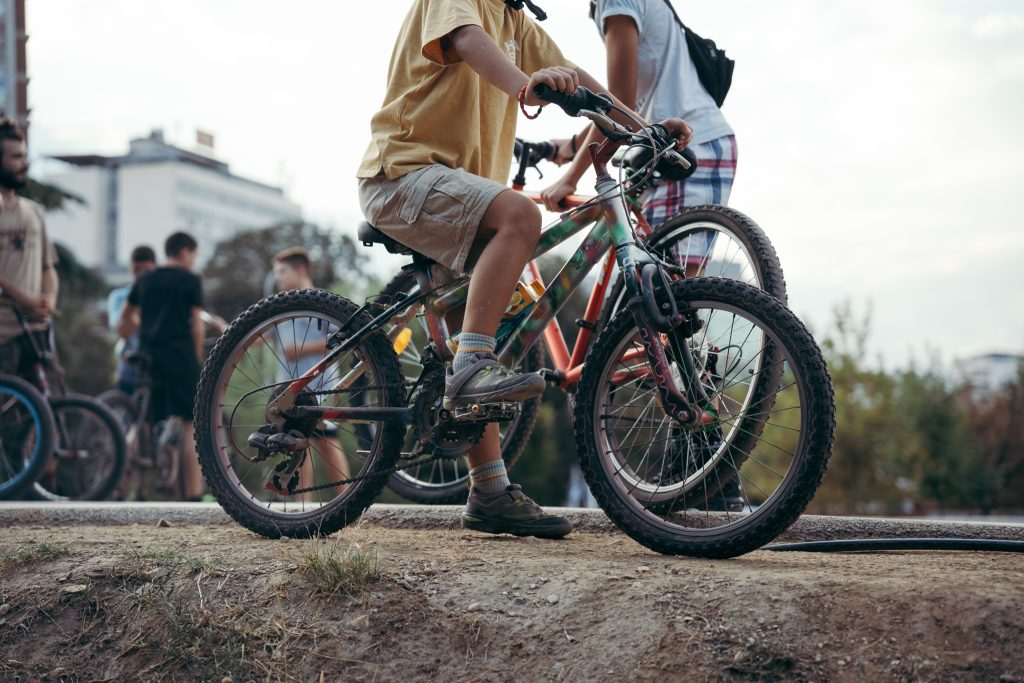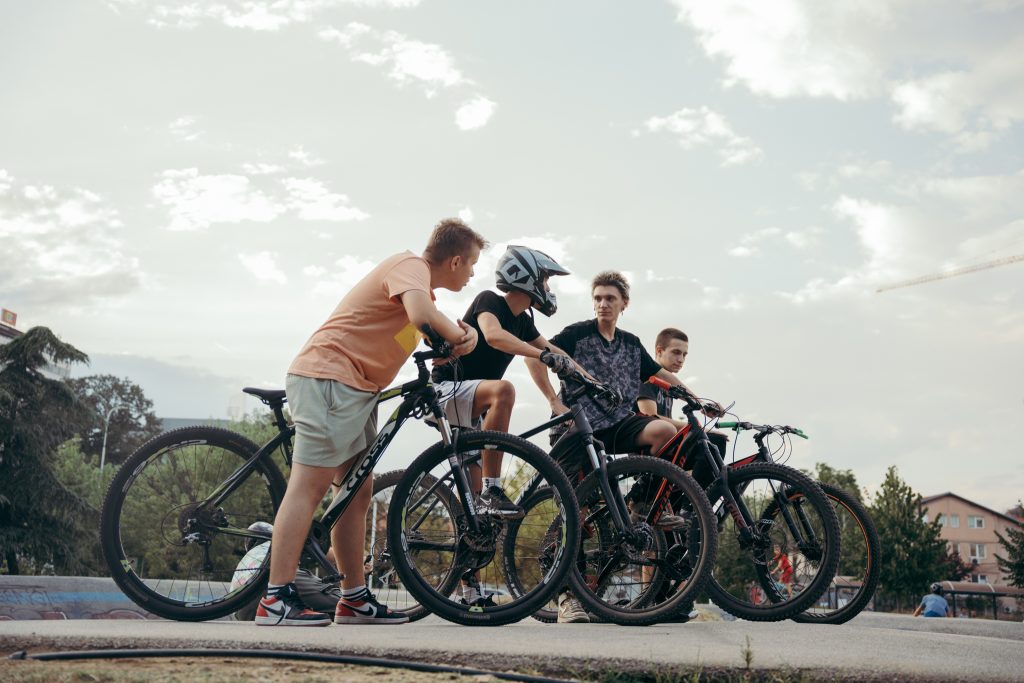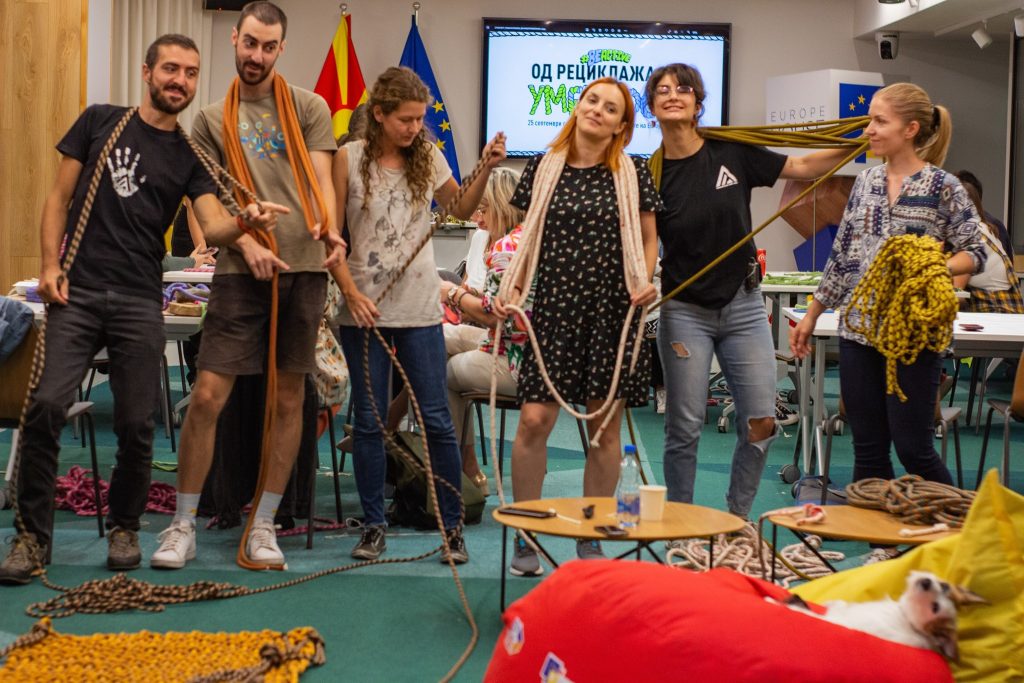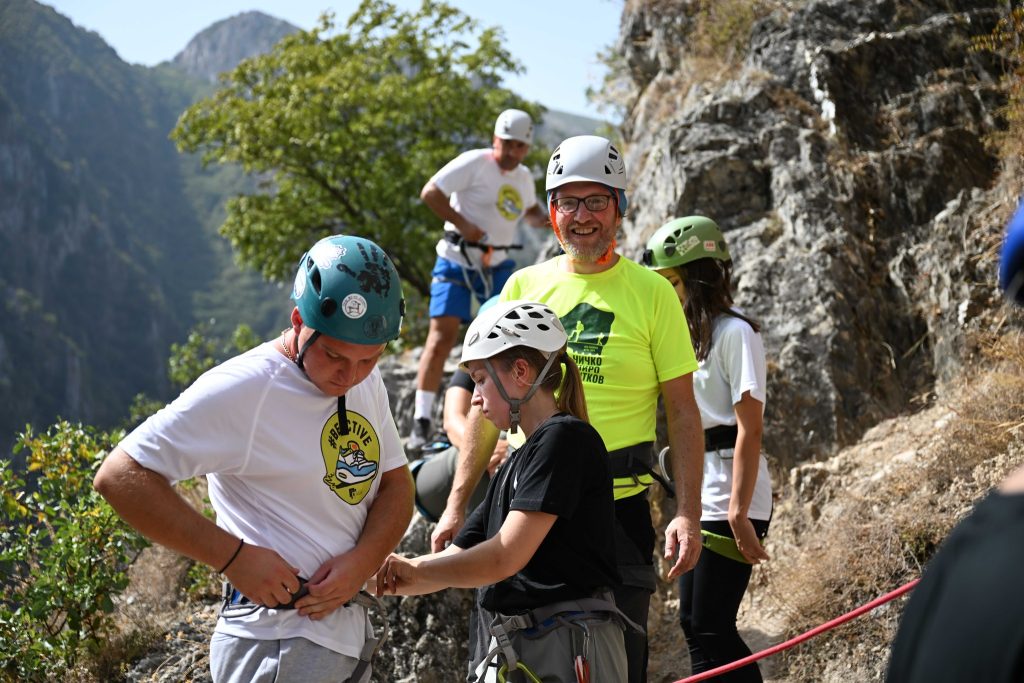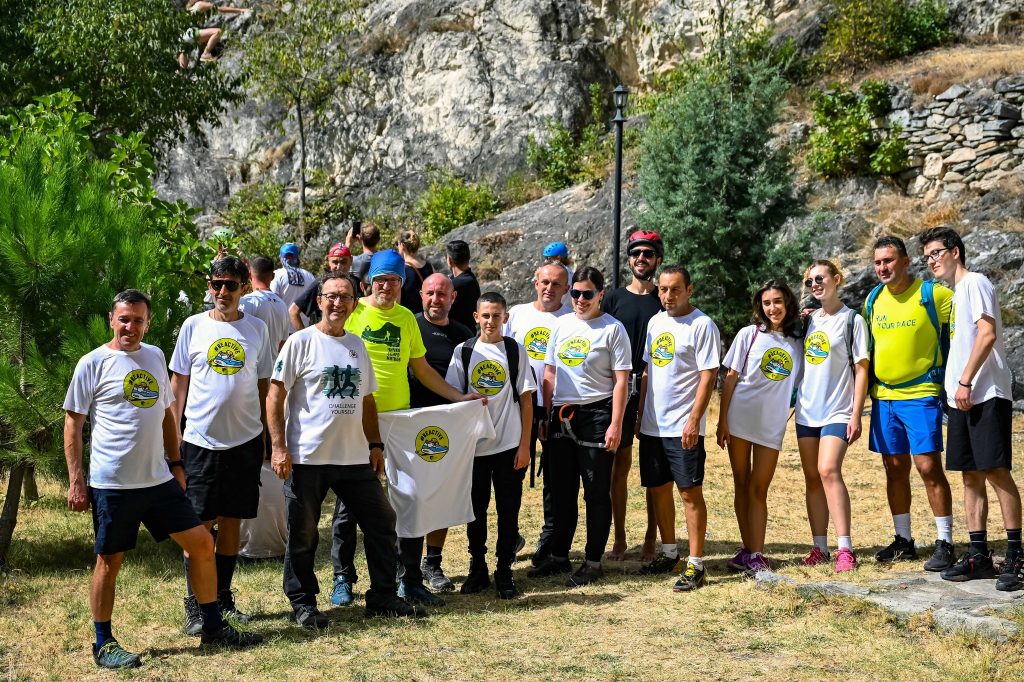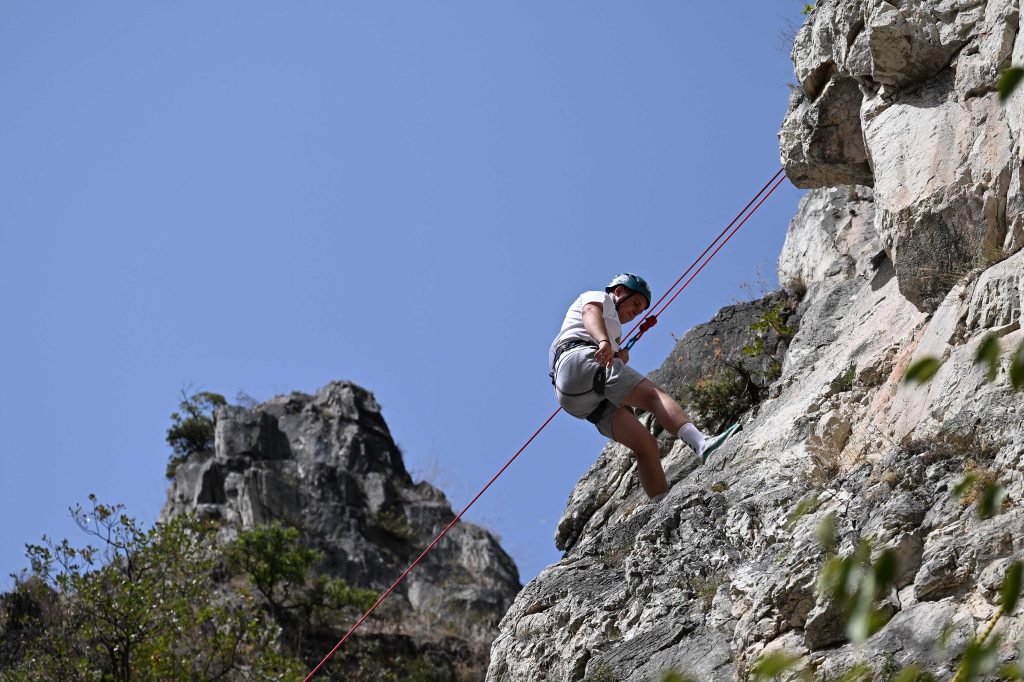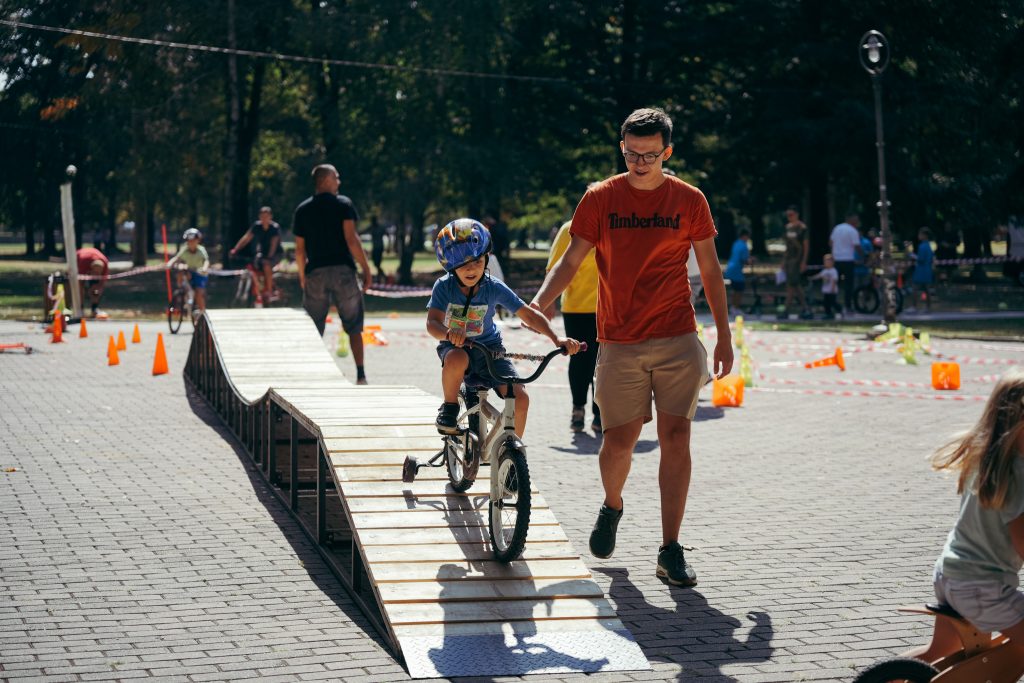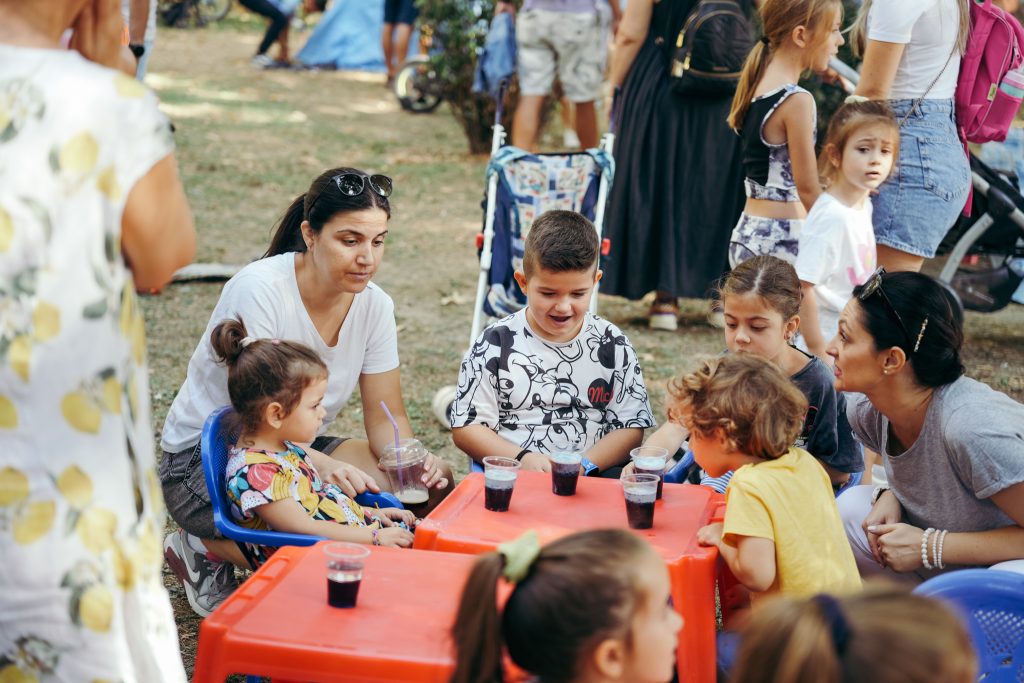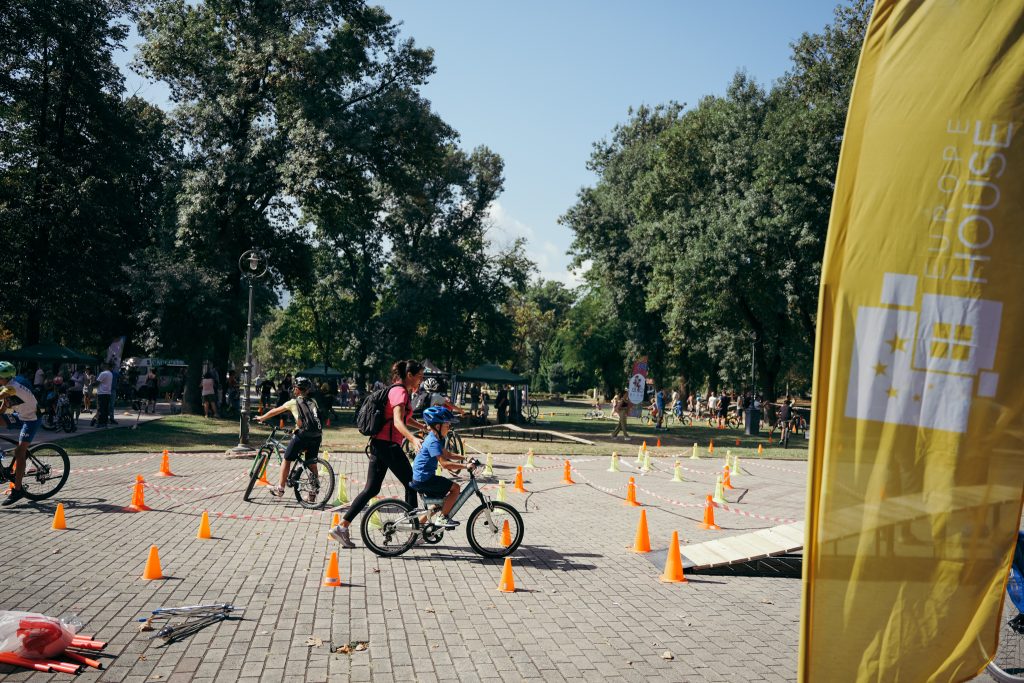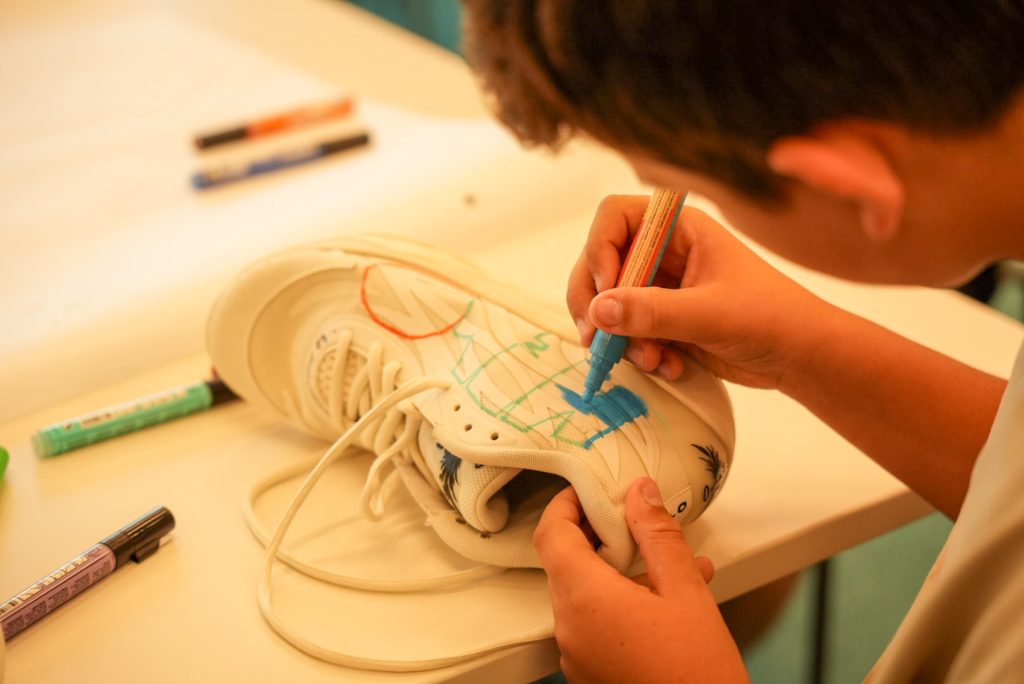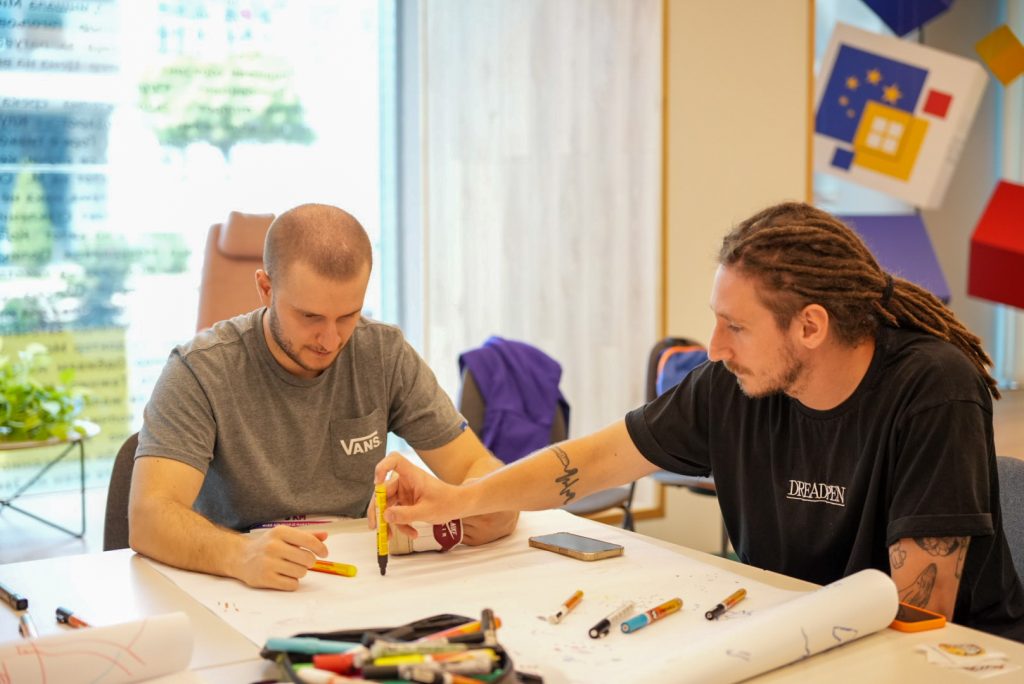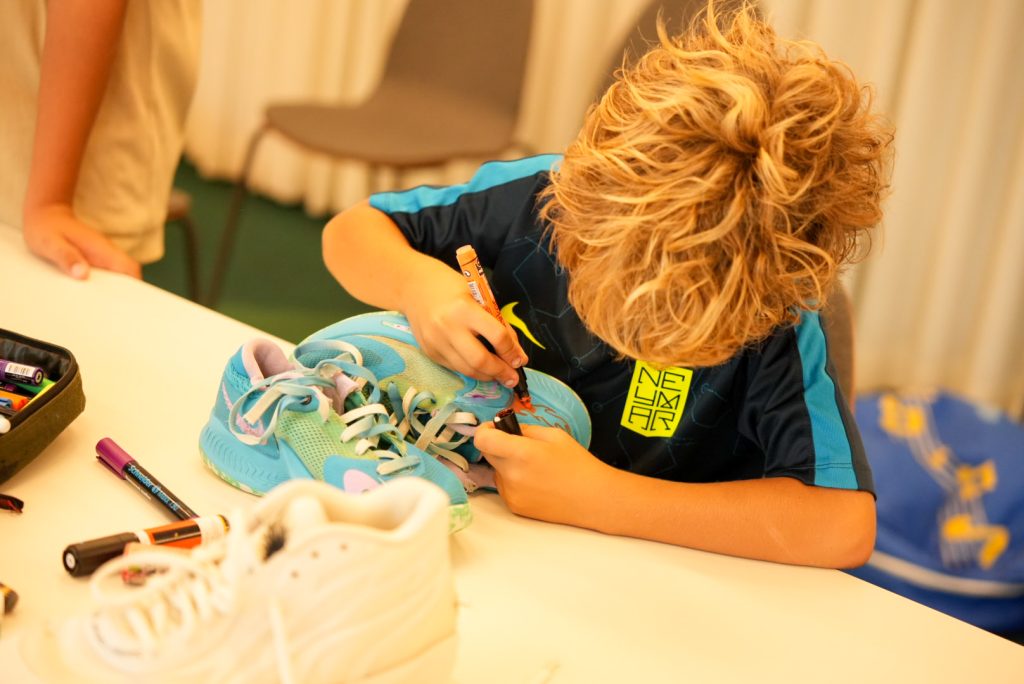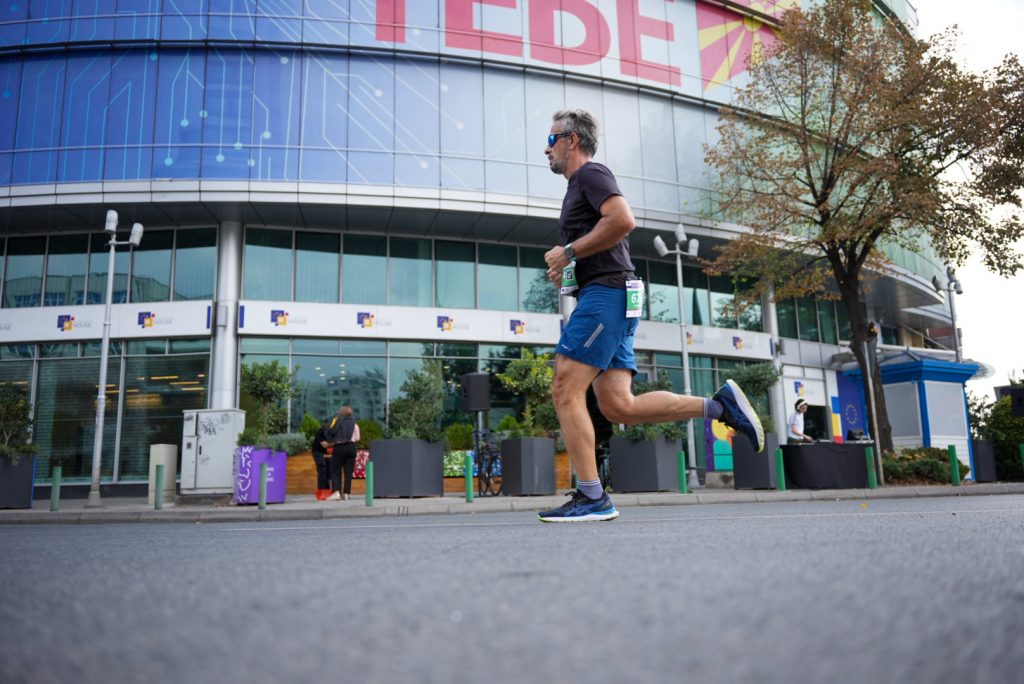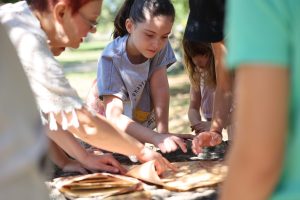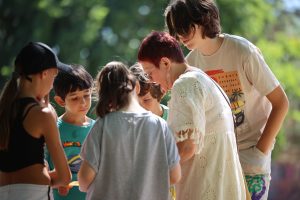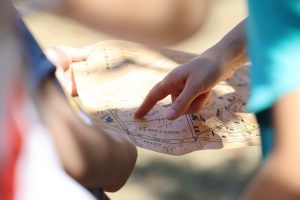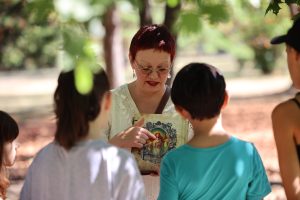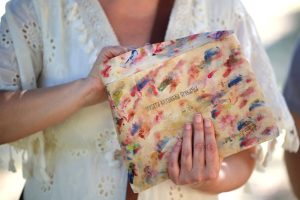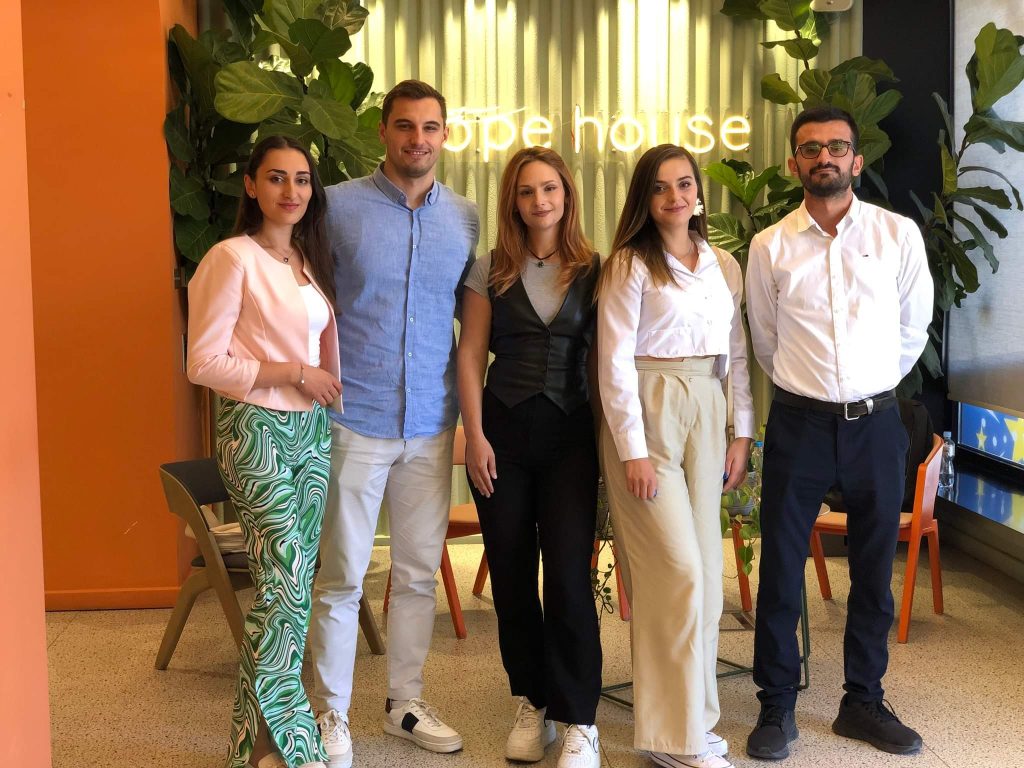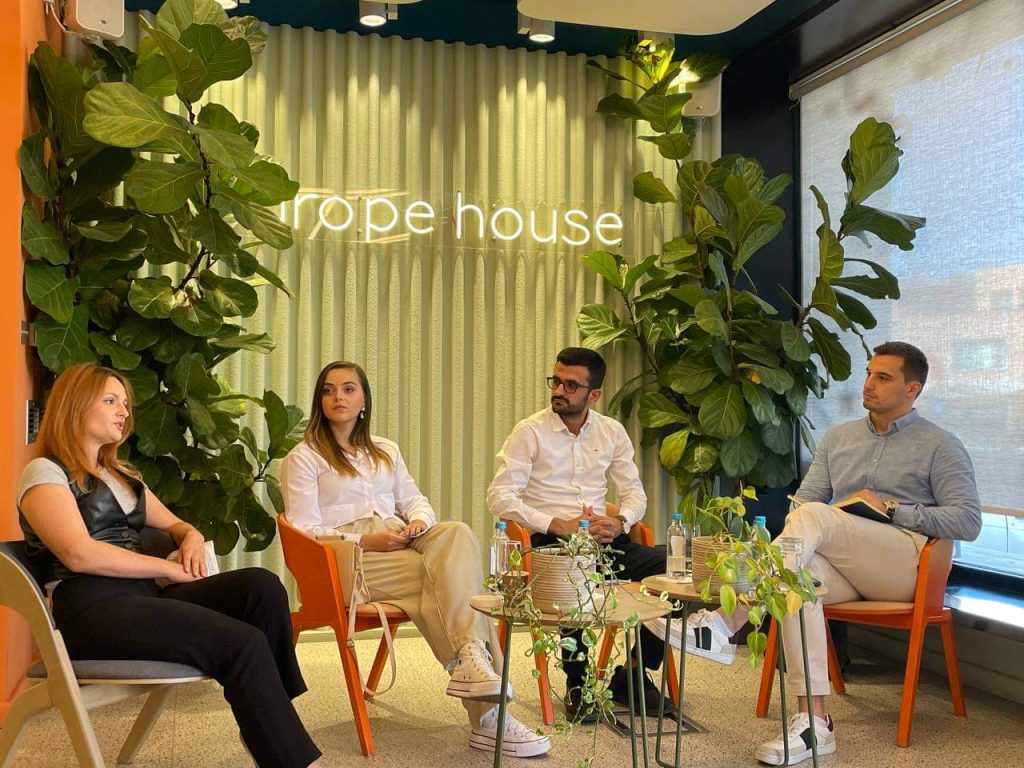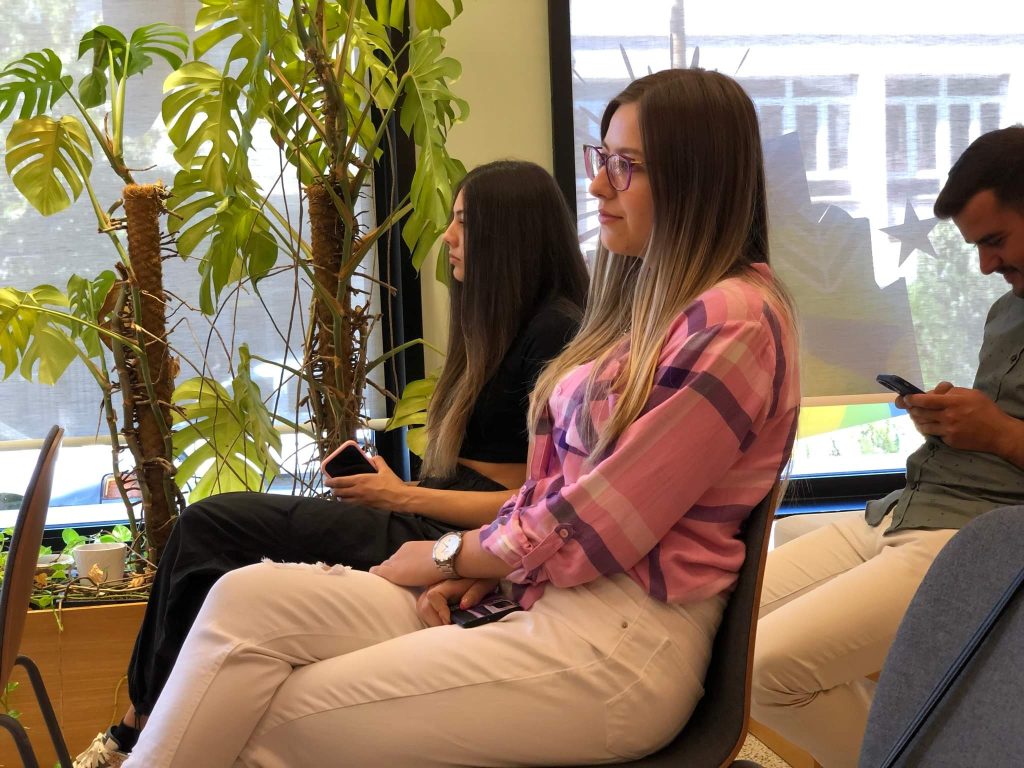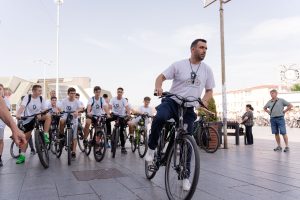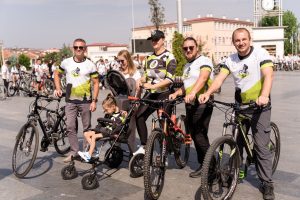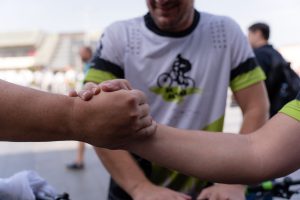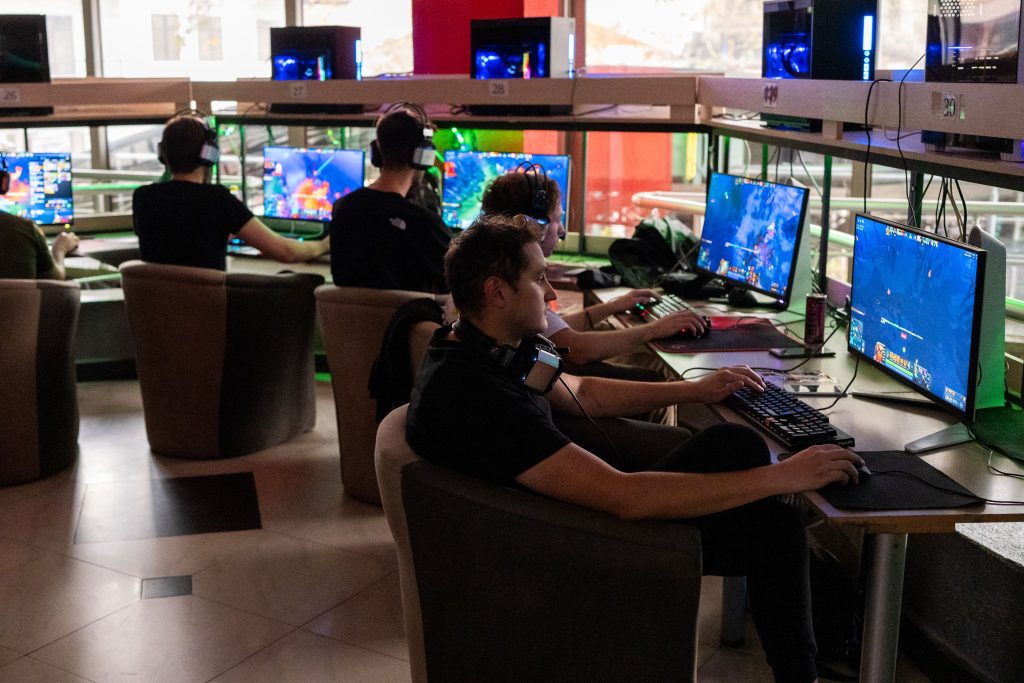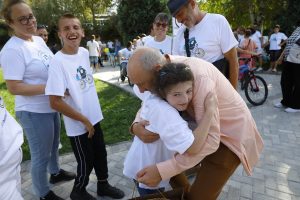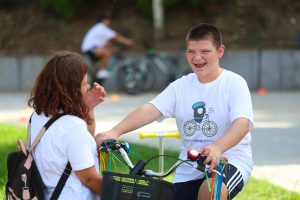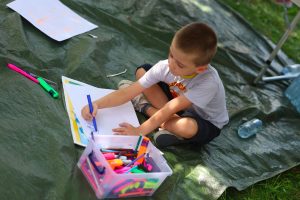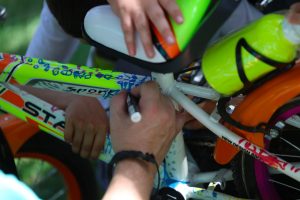

Designer/ Ilustrator
Zoran Kardula
Dear Buzzers,
On the eve of the 120th anniversary of the birth of Nikola Martinoski, the 55th anniversary of the opening of Nikola Martinoski Gallery and the 50th anniversary of his death, his native town of Krushevo welcomed the first digital colony dedicated to this great Macedonian contemporary painter.
It was a great honour for me, as a native of Krushevo and an artist (graphic designer), to host the first digital art colony and to mentor eight young graphic designers from our country. This was a rare opportunity to see Martinoski’s work in a new light and to explore his hometown, which deeply influenced his art. During our stay in Krushevo, nine artworks were created and presented, first in the Krushevo Old Bazaar and then to mark his birthday, our work was also exhibited at the gallery in company with his personally donated paintings.
After Krushevo, thanks to Europe House, the exhibition continued to other Europe Houses across the country, showing the latest work of these talented young artists to audiences from other cities.
There have been other workshops honouring Nikola Martinoski’s work over the past few years. This year, thanks to the support of the Delegation of the European Union through Europe House, we hope to start a new tradition of hosting digital art colonies in Krushevo, thereby enriching the cultural offer of the city itself and, at the same time, honouring one of the most famous residents of Krushevo. This time of year, the town is very popular with foreign tourists and athletes (there are various state and world championships in paragliding and kite flying), and both the residents and the visitors alike can enjoy the fascinating artwork of Nikola Martinoski.
-Zoran Kardula, designer/ ilustrator
As of this month, the content strategy of our monthly BUZZ Newsletter has developed and expanded by as many Europe Houses as have opened in the last few months. In our ongoing effort to continuously improve the content for our readers and followers, we have introduced a new section looking back at a remarkably successful event that has made an invaluable contribution to society and a substantial difference to the local community. This month’s major event is:
BITOLA IN BLUE! AN EXHIBITION OF GRAPHIC SYMBOLS
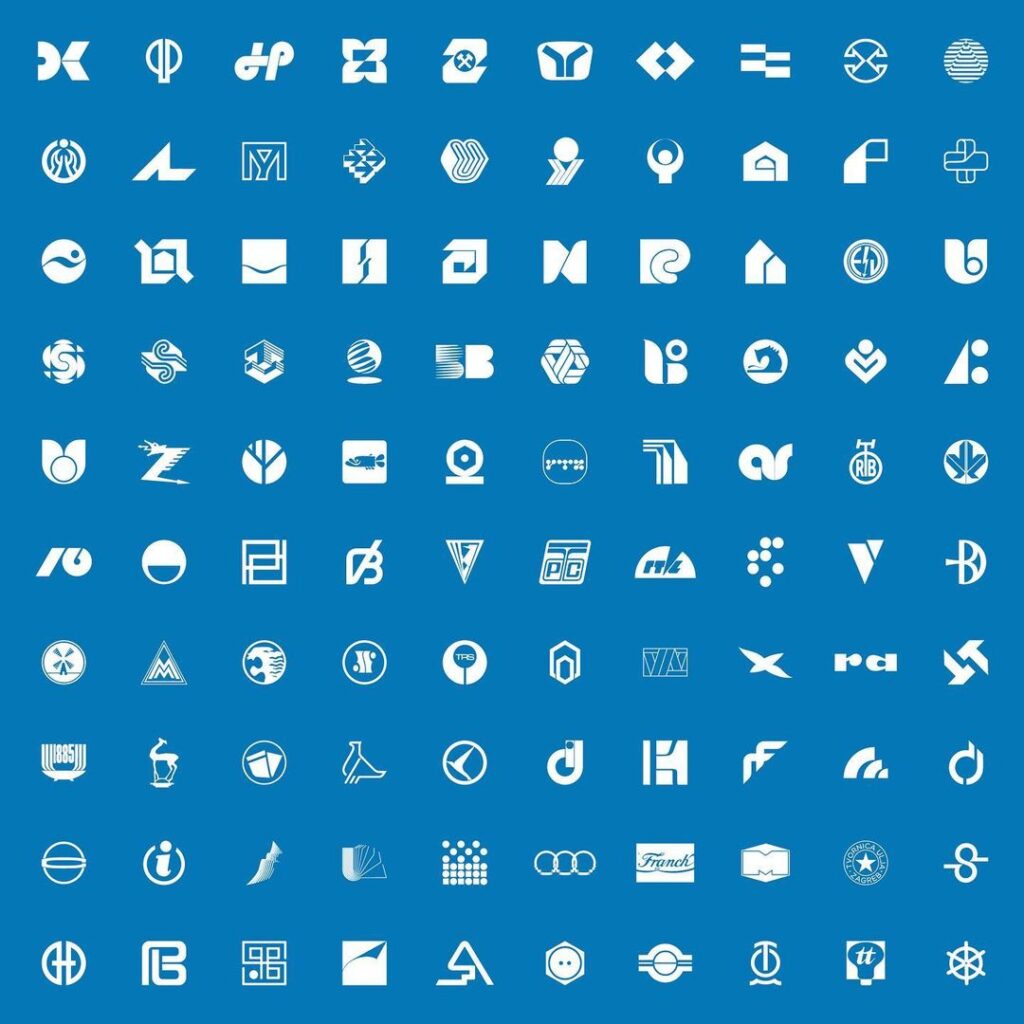
The exhibition Yugo.Logo: Graphic Identification in Yugoslavia has certainly marked the month of September and Europe House Bitola. It was opened by Kostadin Tanchev-Dinka, a professor of graphic design, a true living legend and pioneer of modern design in our country and the Balkans in general. During the opening, a special podcast studio was set up for recording interviews with established graphic design artists. The “aftershock” of the opening night lasted for several weeks, and had a favourable response from both local and international audiences, including several organized visits by primary, secondary and technical education schools.
Ognjen Ranković, a Belgrade-based graphic designer and photographer, launched his Yugo.Logo project, explaining that the standards, concepts and aesthetics of the logos and pictorial marks that were created half a century ago were, in fact, timeless. The exhibition revealed 460 small-format artworks. The project aims to help preserve, digitalize and archive but, of course, also to explore, pay tribute to, and make the best graphic design works of our collective memory available to a large public, especially younger generations.
A Story About the Graphic Mark
“The graphic mark has no particular original, material or size. Each one is original and can be made out of different materials and in all sizes. It is a signature, yet the author does not sign it. The construction of the logo symbol lies in its graphicacy that enables circulation (multiplication, increase, decrease). It is a compact story; sometimes, several different stories are reduced to a single short wordmark. The word transforms into an icon that can be read at a glance: we see and memorise it faster than we understand it. The mark is the better part of the story. Each pictorial mark represents new love, and we dream and think about love in real life; everything gets mixed up. Therefore, it is unknown how the mark is born. The pictorial mark is a light affliction.”
Miloš Ćirić – an excerpt from his book “Graphic Identification”, Belgrade, 1981.
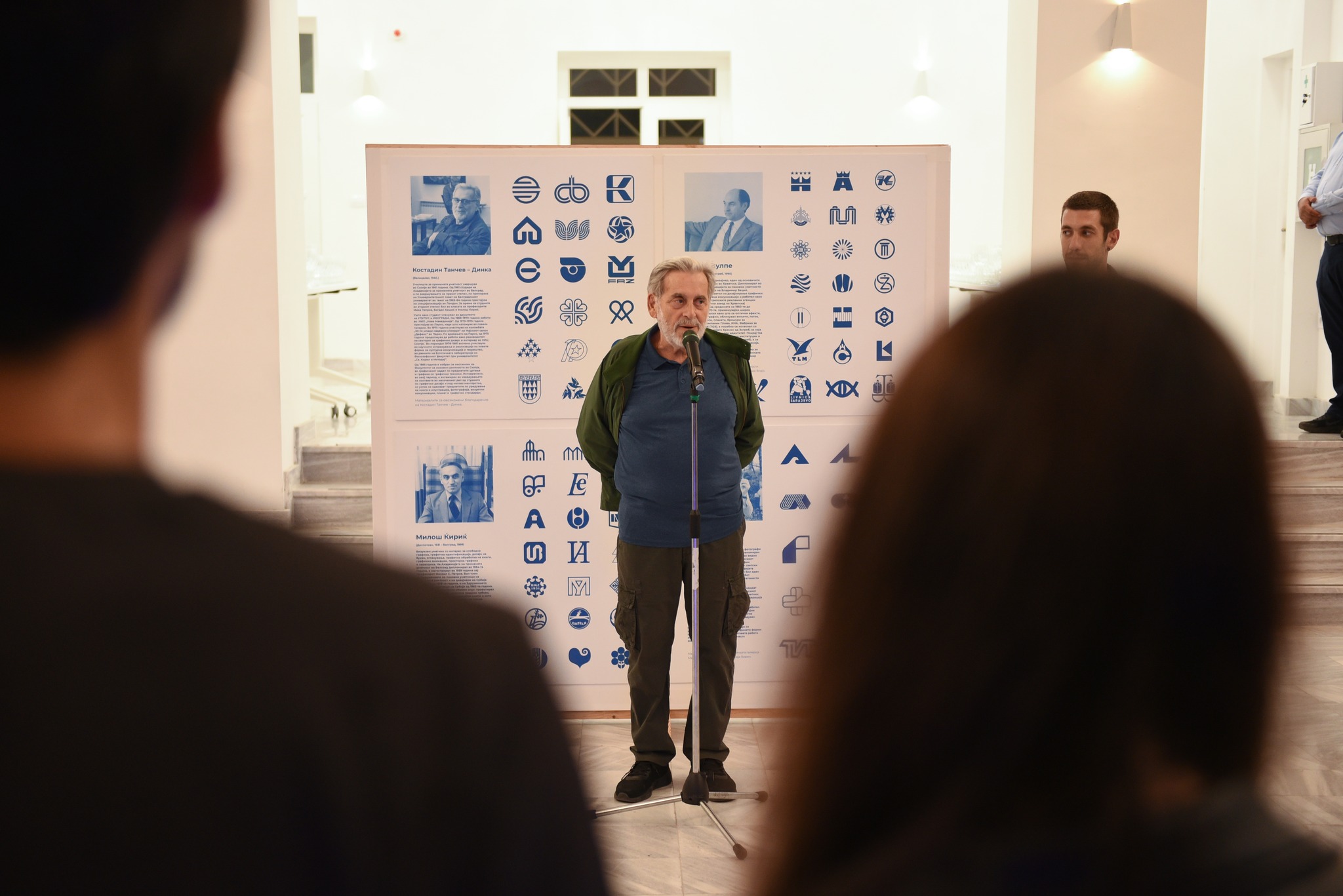
WE ARE READY TO GO FULL STEAM AHEAD! EUROPE HOUSE SKOPJE SMASHES EVENT RECORDS THIS SESION!
Europe House Skopje ended the month of September with a record number of events – 41! During the dynamic four weeks of September, we had three major initiatives: the European Heritage Days, the European Mobility Week and the European Week of Sport. And during these four challenging and super dynamic weeks, the word of the month was teamwork! During the European Mobility Week, together with Eco-Logic, we organized seven different events in seven municipalities in Skopje. As for the European Week of Sport, we collaborated with the Alpinist Club Skopje in organizing a hike on Matka and a workshop on recycling climbing ropes into art. The Week of Sport’s final event was the Skopje Marathon, which once again proved that this was an excellent opportunity to experience unforgettable moments and become part of a unique running community.
Together with HAEMUS and Storytelling Skopje, Europe House Skopje coordinated a diverse spectrum of events for European Heritage Days, including the search for mythical creatures in the city park and a workshop on cultural heritage interpretation.

Ten young explorers took part in a newly invented game to search for mythical creatures in the City Park in Skopje. The goal of the game is to teach young people about Macedonian cultural heritage, stimulate their imagination and stir up interest in this region’s mythology, create new experiences, expand their social circle and learn something new about their affinities and interests.
Myths are not just stories or symbolic narratives. They are stories we believe in. The essence of myths is belief. Hence, we encourage young people to find an interest in cultural heritage because heritage connects people and reminds them of the diversity of the communities that we live in.
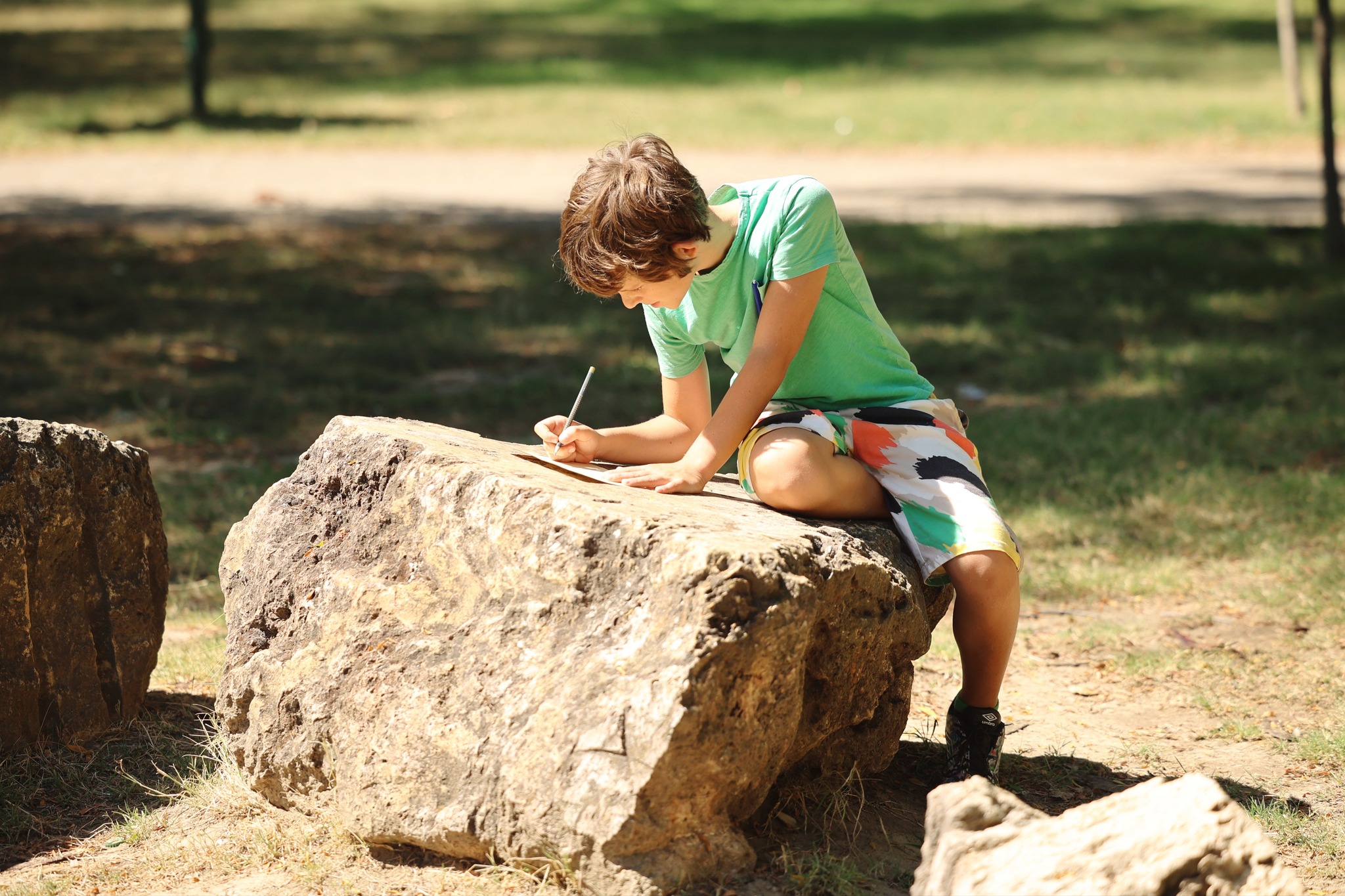
The second initiative marking the European Heritage Days was the interpretative training, which aimed to redefine the interpretation of heritage in the context of sustainable tourism. In this one-day educational training program, participants were encouraged to improve their creative visualization and communication skills in heritage interpretation. The goal was to create cultural tourism products that would contribute to the sustainable development of local communities.
iFail IN EUROPE HOUSE KRIVA PALANKA
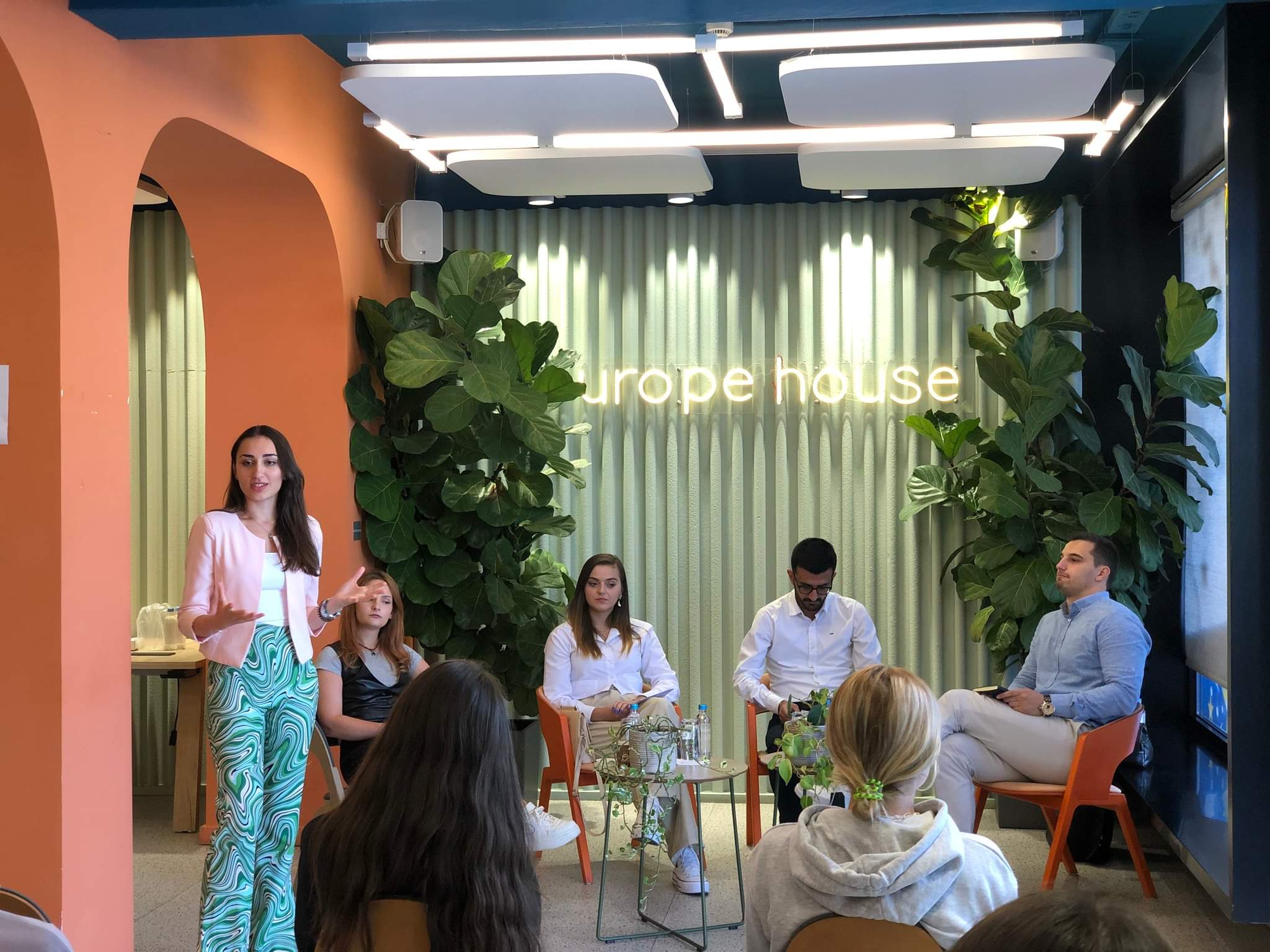
In collaboration with the Global Shapers Hub Skopje, we transformed Europe House Kriva Palanka into a wellspring of inspiration and an extraordinary classroom. Here, we imparted invaluable lessons on success, courtesy of young individuals who’ve endured setbacks, risen from adversity, and persistently pursued their dreams until they transformed into reality.
#iFail was a compendium of narratives encompassing professional hurdles, unpredicted trials, and the labyrinthine journey toward self-actualization. The event’s unique resonance derived from the presence of accomplished young individuals who generously shared their insights and life trajectories, fostering a spirit of mutual support and paving the way for a collective future led by a dynamic and united youth that leads by example.
Within the walls of Europe House Kriva Palanka, tales of triumph and tribulation echoed, acting as a catalyst to inspire and invigorate aspiring young leaders and success-seekers.
Don’t count the days, make the days count. #iFail #EuropeHouseKrivaPalanka
In celebrating the European Mobility Week and the Week of Sport,
EUROPE HOUSE STRUMICA scheduled a wide range of educational, cultural and social initiatives on various topics
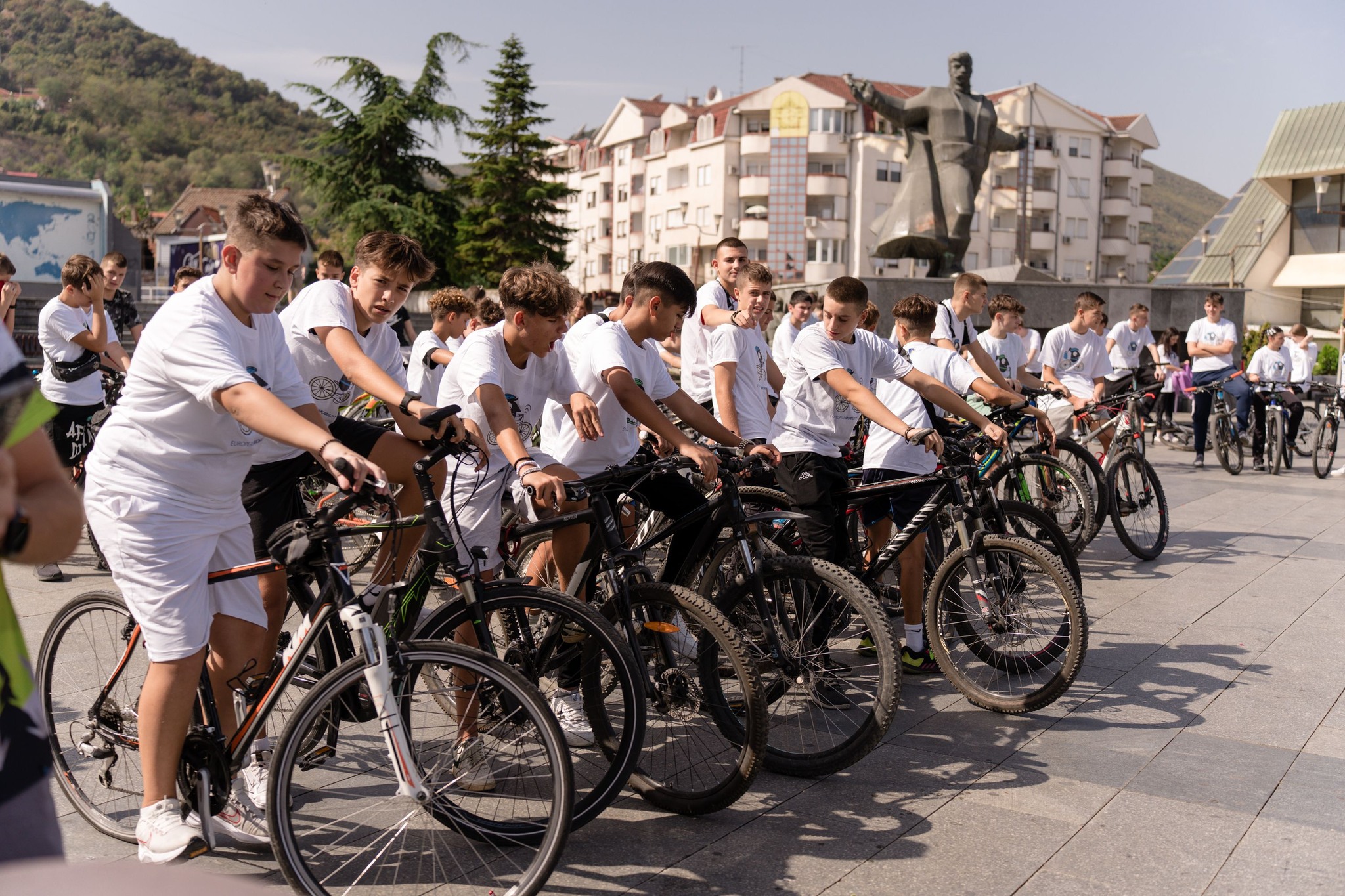
One of the events that marked the European Mobility Week was Car – free Day – a parade with zero emissions which attracted considerable attention among the locals. Being organized for the third year in a row, this event promoted clean and energy-efficient vehicles, urban mobility and environmental awareness. The popularity of the parade escalates every year. This year, it saw 350 people take the streets, highlighting the growing enthusiasm for sustainable mobility.
For the second event highlighting the European Week of Sport, Europe House Strumica joined the local partner Level E-sport club in organizing BE ACTIVE – Level Game Fest. With the participation of over 200 gamers, this event was the highlight of the e-sports calendar in our country. Six teams of five candidates entered four gaming competitions: Fifa23, Dota 2, League of Legends and Battle For Giostone. Two days of team-based games, excitement, and an awe-inspiring crowd at the gaming centre! For those unable to attend, the championships were streamed live on Twitch, a virtual interactive venue for online performances, drawing over 150 viewers.
EUROPE HOUSE VELES MARKED EUROPEAN MOBILITY WEEK: PROMOTING LONG-TERM MOBILITY
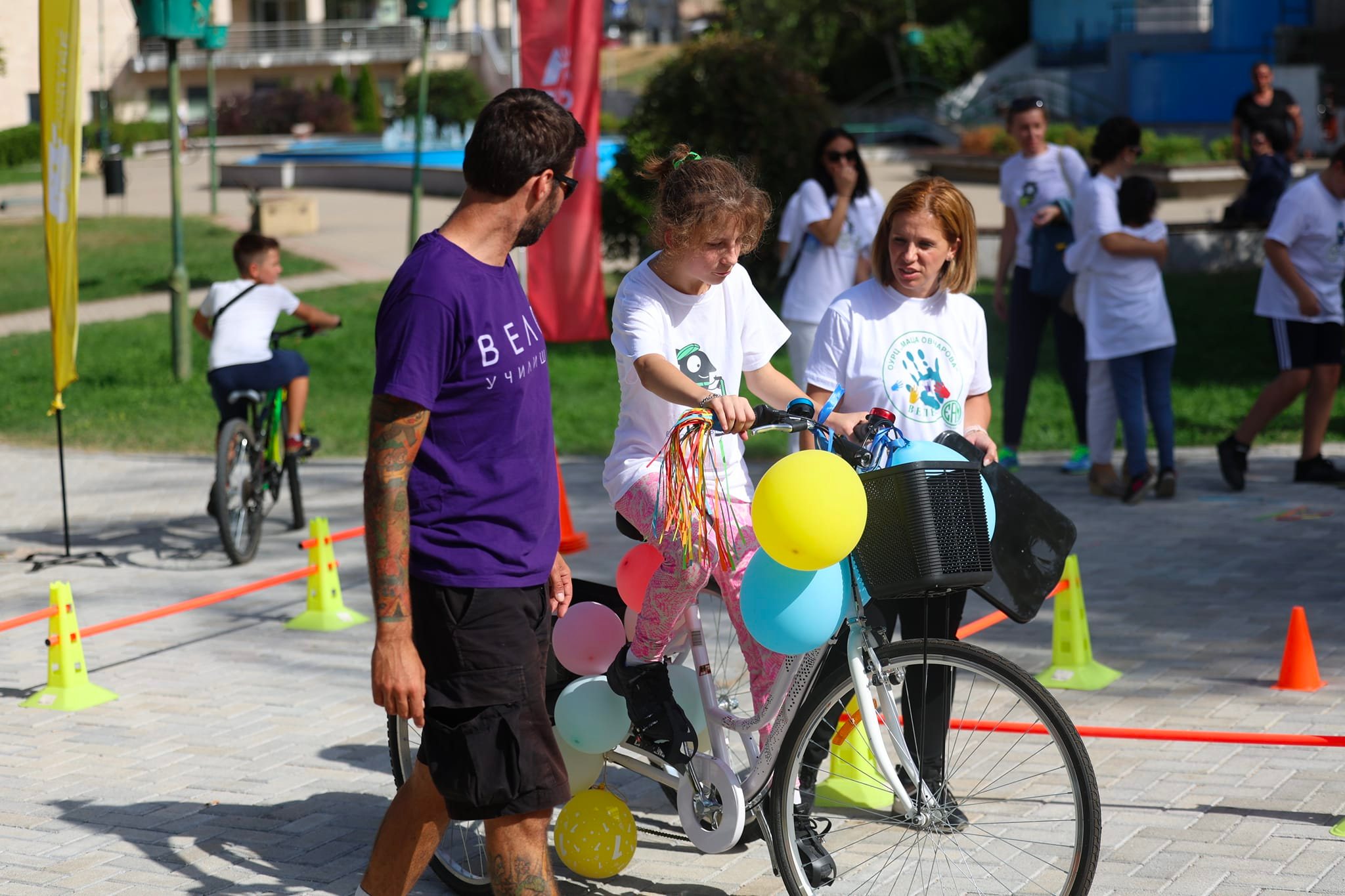
An interesting and instructive event took place at Mladinski Park Veles on September 22nd, 2023, under the umbrella of European Mobility Week. Following the donation of a tricycle for the elementary school for children with special needs “Maca Ovcarova” by the European Union Delegation, the programme “Velo Schools” brought together local primary schools in Veles for a day of fun and learning.
The children eagerly engaged in workshops aimed at repairing and decorating bicycles, promoting the concept of environmentally responsible transportation. In doing so, the event underlined the importance of inclusivity, ensuring that the message of sustainability reached every child, irrespective of their background or circumstances.
The addition of mini bicycle races injected an exciting and competitive spirit into the day’s activities, effectively capturing the children’s imagination and promoting physical activity. Inclusivity was not just a theme but a fundamental principle of the event, ensuring that all children could partake in the day’s events, fostering a collective understanding of the positive impact of sustainable mobility.
This event, which was closely orchestrated in collaboration with Eco Logic and Europe House, beautifully embodied the idea that inclusion is a vital aspect of sustainable mobility. By inspiring the younger generation, regardless of their diverse backgrounds, the event emphasized that sustainable transportation is a shared responsibility and that the journey towards a more inclusive and eco-conscious future is one that all can embark upon together. #EuropeanMobilityWeek
EUROPE HOUSE BITOLA: MANAKI MACHINE
September is the month of cinema fever in Bitola. During the Manaki Brothers International Cinematographers’ Film Festival, Europe House Bitola and the Bitola Department of the State Archives organized an interactive workshop for young people activating the Manaki Machine!
In addition to the introductory historical part of the workshop, the young participants were guided through the original archival materials and the key steps of the film and digital photograph production process from start to finish and, of course, had exclusive access to the authentic camera used by the Manaki brothers.
The Manaki Mashina educational workshop was designed to teach and introduce the pioneering work of the Maknaki Brothers and their contribution to the development of international cinematographic standards. It whispered secrets of moments and echoes long gone, and the breath of beloved memories caught on film is captured forever.
View this post on Instagram




